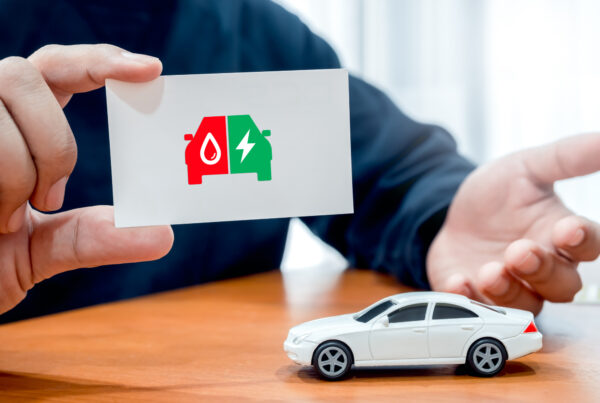Changing fuel type is one of the most obvious avenues of investigation for any fleet organisation. The lower costs and greater distance per litre offered by some fuels compared with petrol presents, on face value, a compelling case for change and the case for change is becoming even clearer in 2021.
However, as with all things there are advantages and disadvantages. Higher vehicle procurement costs and lower resale values need to be factored into any evaluation before any decision should be made to switch to alternative fuels.
Alternate fuels fall into a number of groups each with its own characteristics – from the mainstream alternatives like electric vehicles to the less common ones too. The most common alternative fuels currently considered suitable for commercial application are as follows:
1. Electric Vehicles
As a result of increasing concern about air pollution, there has been a resurgence of interest in Electric Vehicles (EV’s). In the course of any comparison between conventional Internal Combustion technology and EV’s, it is essential to judge emissions that are produced in the entire energy chain.
The range of electric vehicles continues to grow year on year with manufacturers such as Hyundai, Renault, KIA, BMW, Mercedes-Benz, Jaguar, Audi and Tesla infiltrating the market in a big way in 2021.
Moreover the case for electric vehicles is becoming as much as environmental one as it is a financial one. The electricity to charge an EV works out around a third as much per kilometre as buying petrol for the same vehicle and batteries will not normally require replacement for at least 8 years.
2. Hydrogen Fuels
At the present time there are only 2 vehicles on hydrogen other the Hyundai Nexo SUV and Toyota Mirai sedan – but they are not yet available for private sale. The potential for this unique energy source is outstanding because the primary product from the combustion of hydrogen and oxygen is water. It is viewed as the ultimate clean fuel. A major disadvantage with hydrogen is its low energy density, requiring large bulky fuel tanks for storage.
In addition to internal combustion engines, hydrogen can also be used in fuel cells. Considered as one of the most promising alternative transportation fuels, a fuel cell converts hydrogen fuel and oxygen from the air into electricity.
3. Hybrid Vehicles
Hybrid vehicles are also now attracting significant interest and vehicles like the Toyota Camry and the Mitsubishi Outlander PHEV are proven leaders in this market. These electric vehicles use a small internal combustion engine/generator configuration as a range extender.
Seen by some as stopgap technology, until the practical development of hydrogen or EV-powered vehicles, there is usually a price penalty associated with the purchase cost and a somewhat unknown element on the residual value.
4. Liquefied Petroleum Gas (LPG)
Fully factory warranted LPG vehicles were once popular among Holden, Ford, Mazda, ISUZU and Volvo in Australia however interest in bringing them here again has dropped significantly since the removal of local manufacturing in 2016. It’s quite the contrast in the US and Europe, with both expanding their LPG infrastructure and offerings in recent years.
Use of LPG fuel here remains rather small, representing just two per cent of total automotive fuels sales. Where to fill up will also become a concern too as while LPG will continue to be sold at large-volume service stations, availability in regional areas is rapidly dropping.
5. Natural Gas (CNG AND LNG)
Natural Gas attracts significant interest. Predominantly methane, it can be either compressed (CNG) or liquefied (LNG). As CNG it has been used extensively in Italy and New Zealand and is beginning to enter the Australian transport fuel market, where its main application has been fleets of heavy vehicles operating from central locations in urban areas.
6. Alcohol Fuels
Alcohol fuels can be made from sources other than imported crude oil. Traditionally alcohol fuels have suffered from cold-start problems. This issue has now been substantially addressed and the use of alcohol fuels is technically viable.
The final word
Once your organisation has satisfied itself that an alternative fuel is a viable option for your operations and the decision is made to go for an alternative fuel, there should be an active Contingency and Scenario Planning regime in place to ensure the proposed change continues to be an advantage.
The organisation should conduct “what if” scenarios to ensure it understands the consequences of any change that might occur and what contingency plans the organisation should have if the picture changes? But the future is certainly heading away from petrol and diesels, so maybe this year might be the right time to make the plunge to EVs or something else entirely?
The Australasian Fleet Management Association has a variety of tools and resources available to assist members with their fleet operation including our Whole of Life Cost Calculator. For more information about how to gain access to these resources, head to our Membership page.


















